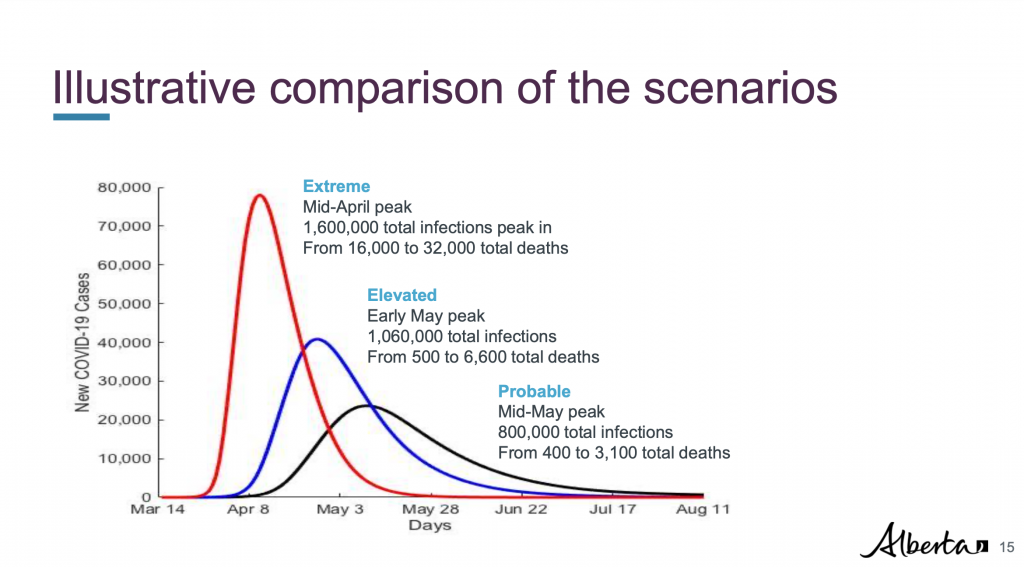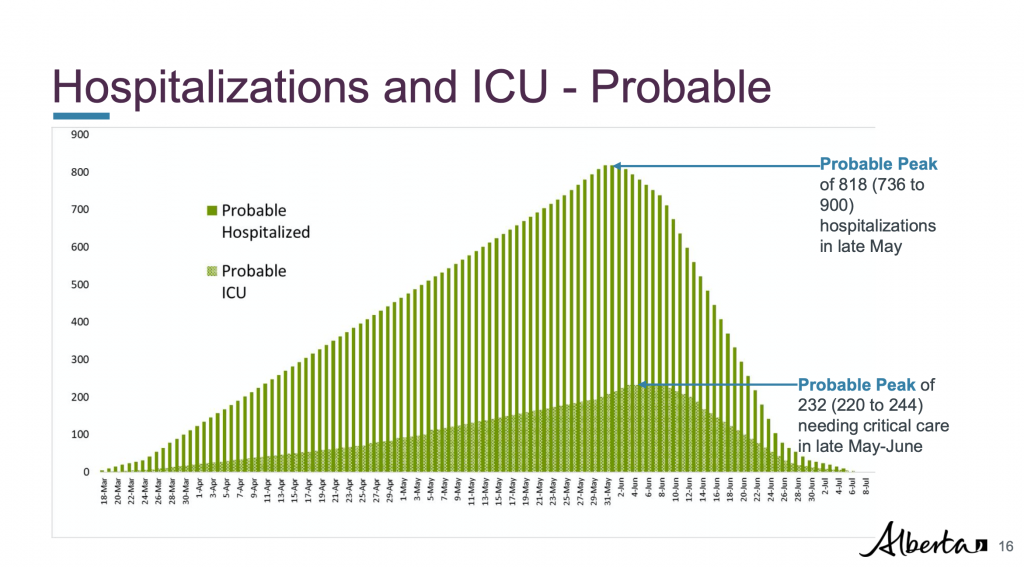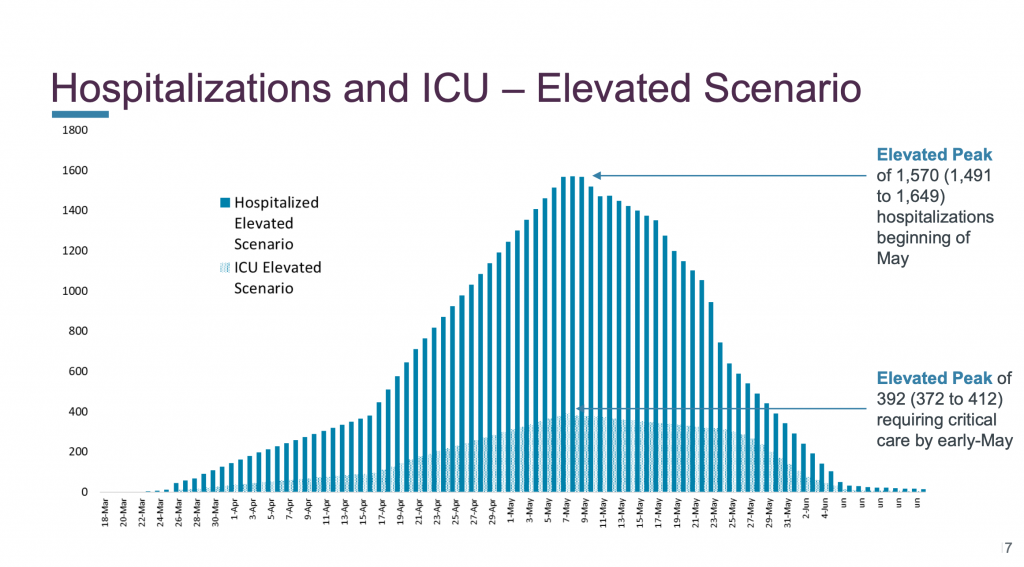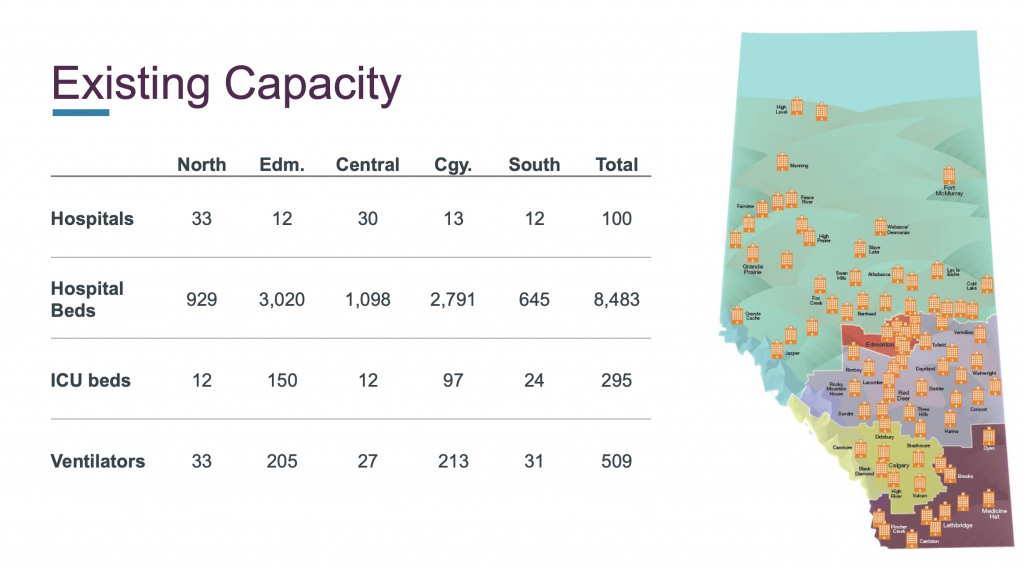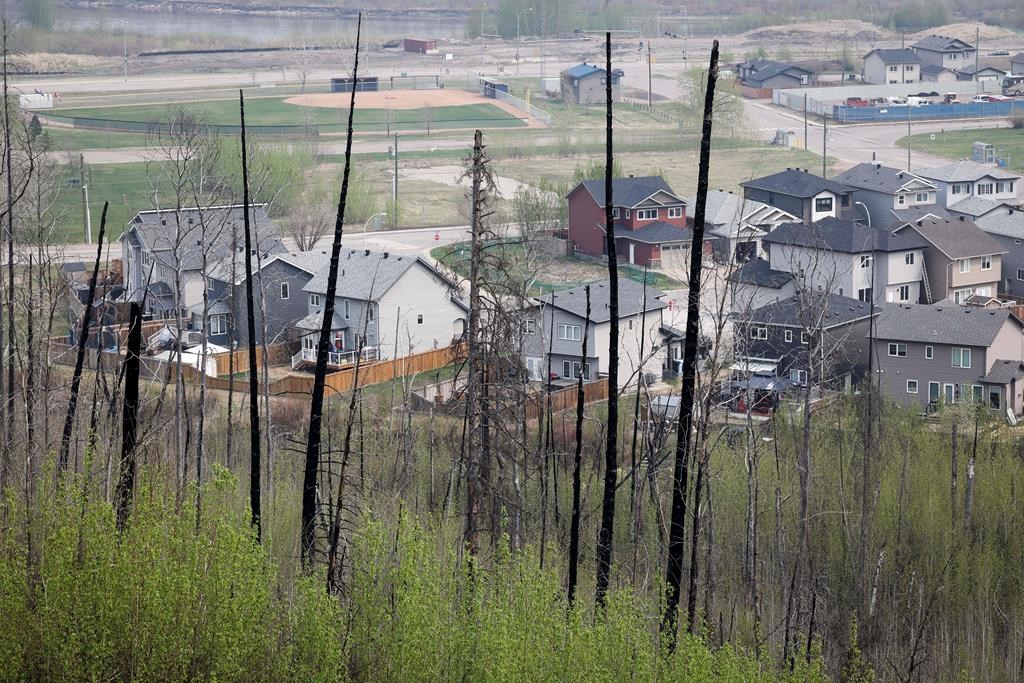COVID-19 impact models released by Alberta
Posted Apr 8, 2020 4:54 pm.
Last Updated Apr 9, 2020 6:26 am.
CALGARY (660 NEWS) — A day after Premier Jason Kenney delivered a dinnertime address to Albertans on the COVID-19 pandemic, further details were released on the virus’ projected impact on the province.
“I know that these numbers can be overwhelming,” said Kenney in Tuesday’s address, as he announced they have predicted 800,000 infections throughout the outbreak.
In this probable scenario, there may be between 400 and 3,100 total deaths. This scenario projects peak infections and impact on the healthcare system by the middle of May.
On the higher ends, an elevated situation has a peak in early May, with over one million total infections and between 500 to 6,600 deaths.
Finally, the extreme projection — which would only have occurred if no public health measures were taken — shows we could have been peaking in the middle of April, with 1.6 million infections and upwards of 32,000 deaths.
In the new data presented on Wednesday, some clarification is given on what that number of total infections means, and also more specifically how the health care system is prepared to handle the looming situation.
As of Wednesday afternoon, there were 50 additional cases of COVID-19 reported in Alberta for a confirmed count of 1,423, with 44 in hospital and 16 in the ICU. There have been 29 deaths, an increase of three from Tuesday. A total of 519 have also recovered from the virus, an increase of 72 over the past 24 hours.
But while the decreased numbers may look encouraging at first, Kenney said this just reflects the amount of tests and the testing eligibility is being expanded in order to detect more cases. There are also some backlogs in the system, indicating we may see much higher numbers in the days to come.
Looking at the death rate, a little under two per cent of Albertans who have contracted the virus have died. Worldwide, the death rate is usually predicted around three per cent or higher. However the numbers can be deceiving.
As indicated by officials, the number of total infections includes confirmed cases — as announced daily by Alberta Health Services — but also the number of cases that may exist asymptomatically or untested in the community.
Therefore, the number of confirmed cases that have resulted from testing is essentially the tip of the iceberg. On that note, Premier Kenney announced that the province is stepping up testing immediately and then to perform as many as 20,000 tests per day once the peak passes, preventing further spread.
One more thing to consider is the fact the first case of the virus was reported later in Alberta compared to other provinces.
Another chart shows that Alberta is also already testing at a higher rate than other provinces and countries.
“This has been a phenomenal Alberta success,” said Kenney.
Regarding infection per capita, Kenney said Alberta is similar to countries like South Korea and Alberta’s overall trend slope remains low.
However, he said that it’s still early for Alberta.
“This is encouraging data that we are doing better than most countries but it’s nothing we can take for granted.”
Among the other provinces, Alberta rates are comparable to Ontario and British Columbia.
However, that can also be a result of Alberta testing at a much higher frequency.
“If you take that into account, we are doing better than, certainly, the larger provinces,” said Kenney.
Officials stressed that a key number to watch for is the rate of hospitalization and the overall impact to the health care system.
Even with 800,000 total infections — many of whom have mild or no symptoms — the probable scenario predicted by the province shows a little over 800 hospitalizations at the peak, with over 200 in the ICU.
The hospitalization peak will happen later than the peak infections, due to the incubation period of the virus.
In addition, the province is improving ICU capacity, including adding ventilators, and hope to have 761 ventilators available at the end of April. At the moment, 314 ventilators are currently dedicated to COVID-19 patients.
If all goes to plan, then there should be enough equipment and beds available to care for the cases serious enough to go to hospital.
“The central part of any strategy to cope with COVID is to push down the curve of infections, while pulling up the capacity of the healthcare system,” added Kenney.
The elevated scenario obviously has starker numbers, but also the projected capacity of ICU beds and ventilators should exceed those projections.
To address staffing, there is accelerated training for ICU nurses and contacting former nurses or retired staff.
Kenney said they also have the ability to move patients to different hospitals around the province to make sure one facility does not become overloaded, a strategy made much simpler due to the public healthcare system.
To protect the healthcare workers, the province said it has ample supply of Personal Protective Equipment (PPE) to last into the next month, but shortages appear in June. Officials in a technical briefing stressed that there are orders in place, and the numbers do not project the supplies still due to arrive.
These numbers are likely to change, as we remain in the early days of the outbreak. It is hard at the moment to predict spread in vulnerable communities, and those numbers cannot be immediately conveyed in these models. There is also a possibility of people defying public health orders and sparking new spreads, which could broaden the impact of the virus.
“They are not a crystal ball prediction of the future,” Kenney cautioned.
This is exactly why there is an emphasis on following the current guidelines
“No age group is immune,” said Kenney. “The more the virus spreads among younger age groups, the higher chance that elderly people will be infected and that is very serious.”
“Please stay home as much as possible,” said Chief Medical Officer of Health Dr. Deena Hinshaw. “I know people are anxious to resume our normal lives. My family is too. However, like I’ve said before, this is our new normal for right now.”
“The coming days and weeks will be critical. The cooperation of all Albertans is needed, each and every one of us must continue to do everything we can to prevent the spread of this virus. This is in our hands and we can do this together.”


